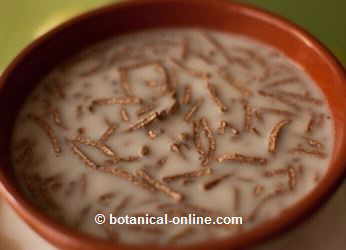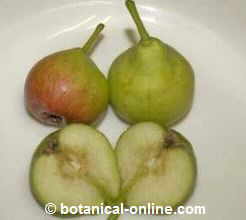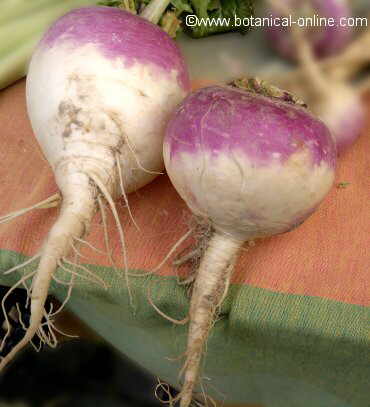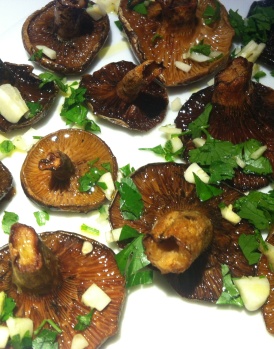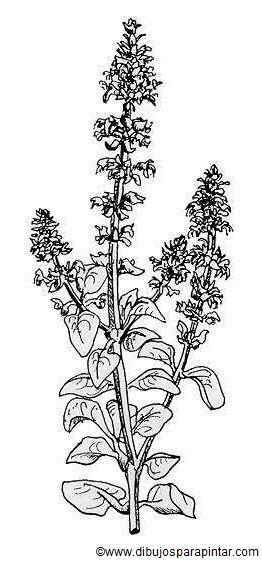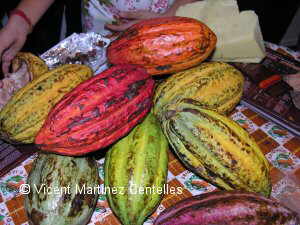Contents
Why are legumes so difficult to digest?
LEGUMES PROBLEMS: FLATULENCE, INDIGESTION AND TOXICITY
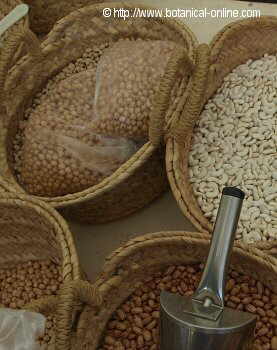 Legumes must be cooked properly so they can be digested well
Legumes must be cooked properly so they can be digested well
Why do legumes produce flatulence?
Legumes or pulses are rich in oligosaccharides, specially raffinose. These are difficult to digest, so that they accumulate in the intestine.
In the intestine, they are attacked by the bacteria of the intestinal flora. In this process a large amount of methane is produced. This is responsible for cramps and flatulence . Some foods, such as lentils, beans or chickpeas are usually responsible for these intestinal anomalies.
Normally, until we get used to eating legumes, such reactions in our body generally take place. As we become used, the reactions are minor, especially if legumes are cooked and eaten in a proper way.
To get used to the consumption of pulses so that intestinal bacteria can digest these components, we need the presence of some enzymes in our digestive tract. Since some people, for genetic reasons, can not produce these enzymes, they tend to suffer from bloating or stomach ache whenever they eat them. In this case, it is important that people who suffer from this problem stop eating this food group.
Can I eat raw legumes?
Except for certain sprouted legumes like alfalfa sprouts or soy sprouts, raw legumes should not be eaten, because they contain components which the body can not digest or are toxic. The prior preparation and proper cooking can make them digestable or destroy the principles that could be toxic in raw state.
Green raw beans, for example, contain plant lectins or phyohaemagglutinins, inhibitors of tripsine enzyme. Lectins are responsible for the agglutination of red blood cells, causing small clots that decrease the flow of blood capillaries and damages bodily organs. Trypsin is an enzyme that breaks down proteins. If beans or fava beans are eaten raw, trypsin is inhibited, so that the body can not digest and suffers from stomach ache, nausea, vomiting or diarrhea. In high amounts, it could be poisonous. Cooking destroys the lectins and trypsin inhibitors and makes them edible. Lentils also contain inhibitors of protein digestion and should not be eaten raw not to be indigestible.
Red beans are those containing a higher proportion of lectins, so they should be cooked at high temperatures to destroy these toxins. Paradoxically, in some places, they are abundantly used in salads that they tend to serve them without having been hotting them enough. Raw fava beans, peanuts, peas, lentils and soybeans also contain lectins though in a much smaller proportion.
Raw soybeans are rich in lectins (soyina), trypsin inhibitors, saponins and growth inhibitors. Soyina produces red blood clots. Soybeans, except when germinated, must be properly cooked in order not to be toxic to the intestinal mucosa.
Toxicity of some vegetables
- Neurolathyrism or lathyrism: Much more dangerous is the neurolathyrism or lathyrism produced by swallowing grass pea (Lathyrus sativus) and other wild species (Lathyrus aphaca, Lathyrus clymenum, Lathyrus latifolius, Lathyrus cicera, Lathyrus tuberosus, etc..) The seeds of these plants is consumed in many poor areas of the world where the dryness of the terrain does not allow grow other vegetables. Poisoning occurs when these vegetables are eaten for a long time and in large quantities in the total diet.
This disease is caused by toxic levels of amino acids alphaand gamma oxalil aminobutyric and alphadiaminobutyric acid. Toxic acids appear throughout the plant but especially in the seeds and pods.
The disease is characterized by degeneration of the spinal cord and possible and irreversible progressive paralysis of the lower limbs. Other symptoms that may result include urinary incontinence, bowel problems with diarrhea, abdominal pain and respiratory problems due to blood clotting that prevents irrigation of the pulmonary alveoli.
The same disease can also affect many types of livestock such as horses, pigs, hogs, chickens and pigeons. In these animals, in addition to neural problems, these foods can cause osteolathyrism, a disease that affects the formation of bone, producing bone weakness.
Raw chickpeas contain toxins that are eliminated after soaking and cooking them in water. Ingestion of cakes made with chickpea flour cooked in the oven without water is also responsible for cases of neurolathyrism.
- Favism: Favism is a type of disease that appears to have a hereditary cause and affects certain African and Mediterranean populations, especially on the island of Sardinia after ingestion of fruits or pollen of fava beans
Favism occurs only in people who have a genetic deficiency of the enzyme glucose 6phosphate dehydrogenase. This gap allows some components beans can produce substances that induce the breakdown of red blood cells
Favism normally takes the form of vomiting, intestinal discomfort, dizziness which usually disappear within a week, although more serious cases where death has occurred to the affected are also known. (More information on favism)
- Aflatoxins: When legumes are not stored in good conditions (storage at temperatures between 25 and 30 ° C, with humidity values above 80%, with ventilation problems and lack of light) there is a risk that the molds from the fields develop mycotoxins. These toxins are toxic to the human body and some very harmful.
Especially harmful are aflatoxins, which are waste products produced mainly by fungi of the genus Aspergillus. These substances have proven to be very harmful to health, in both humans and animals. They cause toxic effects on the nervous and immune systems and play an active role in the development of liver cancer. Peanuts, stored in poor conditions, tend to develope aflatoxinproducing Aspergillus.
- Allergies: Sprouts of some vegetables, such as bean sprouts, can cause food allergies.
* Related information:
– Remedies for the flatulence of legumes
– How to diminish flatulence in legumes
![]() More information on legumes.
More information on legumes.

